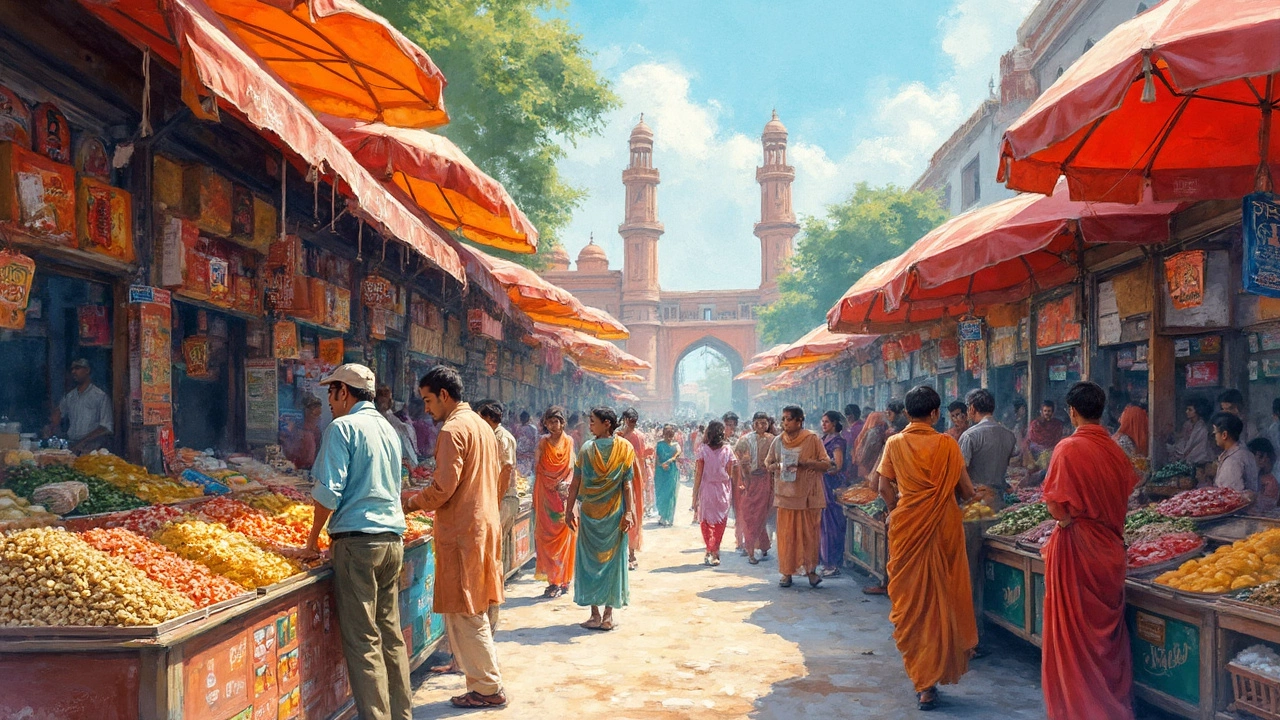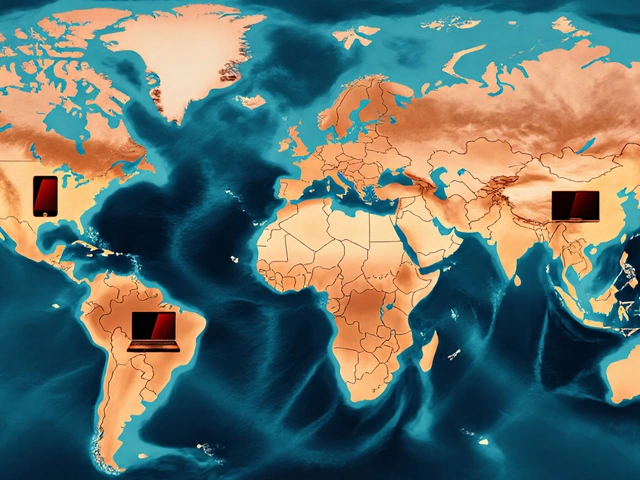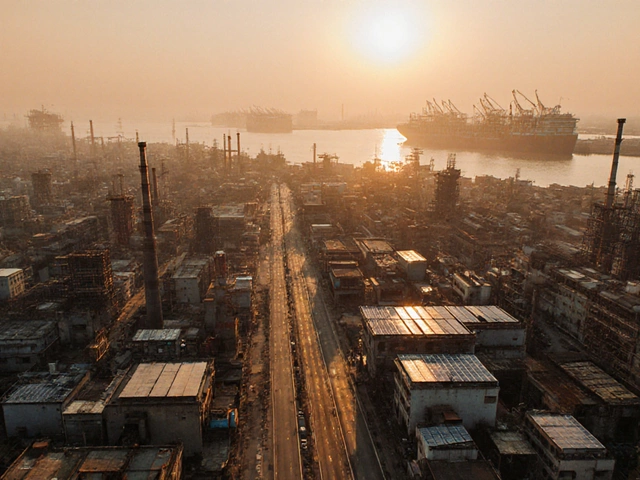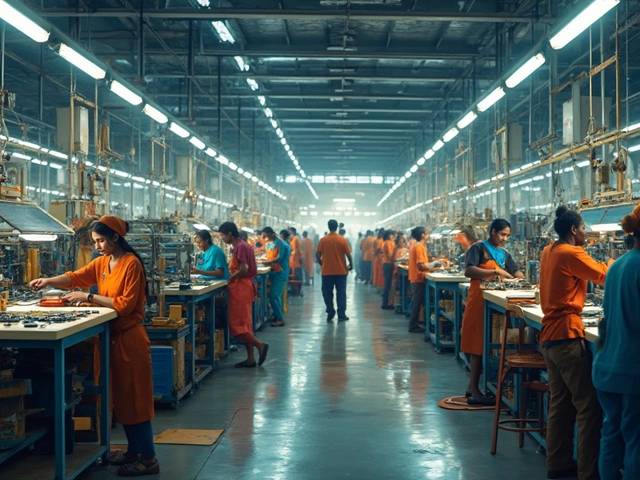Ever wondered who's behind those ready-to-eat meals or those snack packs we love to munch on? Well, looking at the giant in the processed food world is intriguing. The company we're talking about doesn't just fill supermarket shelves; it shapes how we eat and shop.
Diving into their vast array of products, you'll find everything from your morning cereal to that instant noodle cup for when you're on the go. They've practically got a solution for every hunger pang or craving. But it's not just about variety. This company's market reach is mind-boggling. With products available in nearly every country, their influence is truly global.
Of course, being big comes with its share of responsibility. The company's taken steps towards sustainability, although critics say there's still much to do. From eco-friendly packaging to reducing carbon footprints, they're working on it—a bit slowly, some might say. And speaking of slipping up a notch, their knack for innovation is worth noting. They're constantly tweaking recipes and launching new products to suit changing tastes and dietary needs.
- The Giant of Processed Food
- A Peek into the Product Range
- Global Market Influence
- Sustainability Efforts and Criticism
- Innovations and Future Trends
- How It Affects Our Daily Choices
The Giant of Processed Food
Meet Nestlé, the largest company in the processed food industry. You've probably got one of their products in your kitchen right now. Nestlé is all over the place, from chocolates to pet food and bottled water. This company, with Swiss roots, has grown into a massive player globally, influencing food choices everywhere.
How did it get so big? Let's travel back to the late 19th century. It all started with baby formula, a game-changer back then. Over the decades, they've scooped up tons of other brands and expanded their reach. Today, Nestlé operates in almost every corner of the world, with more than 2,000 brands under its belt. Yup, that's a lot of food.
Global Reach and Market Power
Nestlé's presence is not just widespread; it's powerful. They're responsible for a significant chunk of the global food processing market. With operations in 189 countries, they're everywhere, and their products cater to local tastes while keeping their core offerings consistent.
And they aren't slowing down. In 2022, they reportedly earned a whopping 94.4 billion Swiss Francs in sales. That's a lot of chocolate bars and instant coffee jars!
| Year | Revenue (Billion CHF) |
|---|---|
| 2021 | 87.1 |
| 2022 | 94.4 |
Why So Successful?
Nestlé's secret sauce mixes a bit of art and science. They continually innovate, offering new products like plant-based burgers and healthier snack options. Plus, their marketing is on point, connecting with consumers across different cultures.
They're also quite savvy in their acquisitions. Remember how they bought Purina for pet food or Gerber in the baby food sector? Smart moves for expanding their portfolio.
But it's not all rosy. Being big makes you a target for critics, and Nestlé has faced its share of controversies. Whether it's about water rights or aggressive marketing, they've had to navigate some rough water. Yet, they remain a giant, with lessons to glean for any company looking to scale in the food industry.
A Peek into the Product Range
When we're talking about the biggest name in processed food, it's clear their product range is as diverse as it gets. Whether you're grabbing a quick breakfast or planning a full dinner, they've got something for you. This company seems to have a product for every mealtime and snack break.
Starting with breakfast, you'll find a host of cereals and smoothie mixes. These are the go-to choices for people needing a quick energy boost in the morning. But it’s not just about convenience; there's no shortage of flavors and variations, from traditional to those catering to dietary preferences like gluten-free and high-protein.
Lunch and Dinner Options
For lunch and dinner, the company's freezer aisles are packed with options. Frozen pizzas, lasagnas, and even gourmet meals are ready to go from freezer to plate in minutes. These meals are designed to suit a wide range of tastes and nutritional needs, including vegetarian and low-calorie options.
Snacking Varieties
When it comes to snacks, anyone feeling peckish will be spoilt for choice. The shelves are loaded with chips, cookies, and health bars. For those looking to indulge a little, decadent treats like chocolate-coated goodies and creamy desserts are in abundance.
This bountiful product range is a testament to their remarkable market insight. They craft and tweak their line-up based on consumer feedback and emerging food trends. Not to mention, their research and development team is always cooking up something new to keep us intrigued.
Overall, the largest company in this field knows what folks are hungry for, making sure their products cater to your needs—whether it’s a quick meal or a thoughtful, dietary-friendly choice.
Global Market Influence
When we talk about the largest company in the processed food industry, its market influence stretches far beyond just making tasty treats. This giant has a presence almost everywhere. It's like no matter where you go, you can probably find their products. That reach is a big deal because it means their decisions can impact food trends around the globe.
In fact, this company operates in over 190 countries. That's right, from bustling metropolises to small villages, their food is often a staple. This incredible reach allows them to dictate market trends, such as which ingredients are in or out, and even how we perceive convenience in food. Their marketing strategies might vary from one country to another, but the goal remains the same: make their food a key choice for consumers.
Strategic Market Moves
Let's talk strategy. To stay on top, this company regularly acquires local brands, expanding its product portfolio and influence even more. It's a clever move because it helps them tap into new markets without completely reinventing their offerings.
But it's not just about acquisitions. They're also big on collaborations. You'll often see them partner with popular fast-food chains or local eateries to create co-branded products. This not only boosts their sales, but also strengthens their market presence.
Economic Impact
The food industry isn't just about filling stomachs; it's about creating jobs and boosting economies. This giant of a company employs thousands worldwide, providing livelihoods and contributing to local economies. They're not just hiring for their production lines, but also in logistics, marketing, and research.
| Region | Number of Employees |
|---|---|
| North America | 50,000 |
| Europe | 70,000 |
| Asia | 100,000 |
You see, every time there's a policy change or economic shift, this company has the ability to sway the market. Their global influence means that any decision they make can ripple through the sector.
So, next time you grab that favorite snack, think about the massive machine behind it—and how it's not just serving up your food, but actively shaping the way the world's food system operates.

Sustainability Efforts and Criticism
When you’re the biggest name in processed food, people expect you to care for the planet, right? Well, this behemoth isn't ignoring environmental stuff—far from it. They've channeled significant resources into making their operations greener.
Eco-Friendly Packaging
One area where they're making strides is packaging. They've rolled out initiatives to reduce plastic usage, switching to eco-friendly materials. It's a small step but considering the scale at which they operate, it counts. They're aiming for 100% recyclable or reusable packaging by 2025.
Sourcing and Supply Chain
Then there's sourcing. The company has pledged to source ingredients sustainably. They’re working closely with farmers to promote good agricultural practices. Despite these efforts, critics say more can be done to ensure fair payment and working conditions for everyone involved.
Carbon Footprint
On the energy front, they’ve vowed to power their facilities with renewable energy. They’re moving slowly but are on track to reduce their carbon emissions by a hefty percentage by 2030.
| Year | Emission Reduction Target |
|---|---|
| 2025 | 25% |
| 2030 | 50% |
The Criticism
Despite these efforts, there's no shortage of criticism. Environmental groups argue that while changes are happening, they're at a snail’s pace. Product processing also consumes tons of water and energy, which remains a sticking point.
So, whilst the world's largest food processing company has certainly upped its game in sustainability, it’s clear there's still a long way to go. But seeing them make moves could encourage other companies to follow suit. More pressure from consumers like us might just speed things up.
Innovations and Future Trends
The world of processed food is always changing, and this giant company is no stranger to shaking things up with its innovations. Let's dig into some of the cool stuff they're doing and what the future holds.
The Quest for Healthier Options
With everyone paying more attention to what they eat, the demand for healthier options is on the rise. So, the company is cooking up some interesting new lines of products like low-sodium soups and plant-based snacks that cater to the food industry's growing trend towards health-conscious offerings.
Tech in the Food Aisle
They're also integrating technology in fascinating ways. Imagine scanning a barcode on a packet and getting a personalized suggestion based on your dietary needs, right on your phone. Yep, they're all over that with AI-driven recommendations and even innovative packaging that keeps food fresh for longer.
Sustainability and Ethics
Another trend they're focusing on is sustainability. By 2030, they plan to drastically cut down on their environmental footprint. It means better packaging solutions and sourcing materials more responsibly. These changes show how the processed food industry is evolving to meet the green demands of savvy shoppers.
Local Meets Global
Despite being a global bigwig, there’s a push towards tailoring products to suit local tastes. It's not all about mass production - they're trying to resonate with local cultures by offering region-specific versions of popular items, blending traditional with modern in tasty ways.
What's the takeaway? Whether it's better for you, the tech you use, or the planet we live on, the future of food processing is heading to some exciting places. Keeping an eye on how this industry leader adapts to trends gives us a peek into where our meals are headed.
How It Affects Our Daily Choices
Think about your grocery shopping habits—how often do you end up grabbing a product that's made by the biggest player in the processed food world? It's not just about seeing their brand name everywhere; it's about how their marketing, product placement, and variety shape what we put in our carts.
Their influence is quite significant due to a few strategic factors. For starters, they create convenience. With the pace of modern life, we often lean on quick meal solutions. This company sits at the sweet spot of convenience and taste, making it a go-to for many without the time or energy to cook from scratch.
The Emotional Connection
Ever wondered why that cereal from your childhood feels like a warm hug? These brands build an emotional connection through nostalgia-filled adverts and long-standing products. They know how to tug at the heartstrings, making us choose them out of habit or emotional comfort, without much thought.
Influence on Nutrition Choices
There's more to it than nostalgia, though. This big-name brand also influences our health choices, often leading the charge in 'healthy' processed options. With trends shifting towards health and wellness, they're adapting recipes to cut sugars and fats. However, the reality is that sometimes these options aren’t as nutritious as they seem when consumed frequently.
Availability and Price
Of course, the price and availability game is where they excel. By producing on a massive scale, they can bring products at competitive prices, making them affordable for families. Supermarkets often provide prime placement for such a giant, so their products are right at eye level—or those impulse-buy spots at the checkout.
Here's a snapshot of how their products stack up globally:
| Region | Market Share % |
|---|---|
| North America | 25% |
| Europe | 18% |
| Asia | 15% |
| South America | 12% |
| Africa | 10% |
Pretty impactful, right? That's why understanding their influence is crucial. By being aware, we can make more informed food choices and maybe try tilting towards fresher, less processed options now and then.









